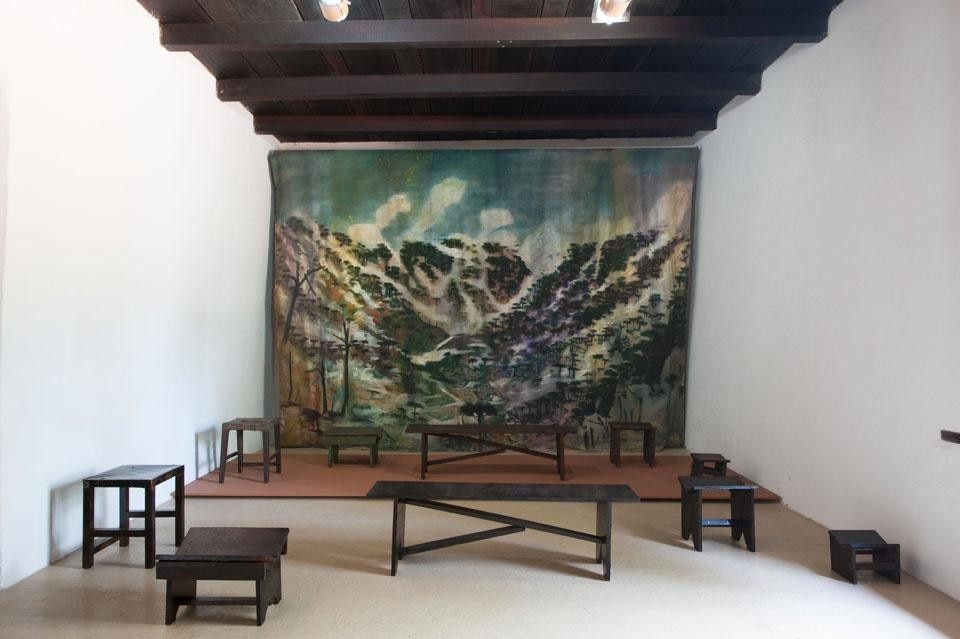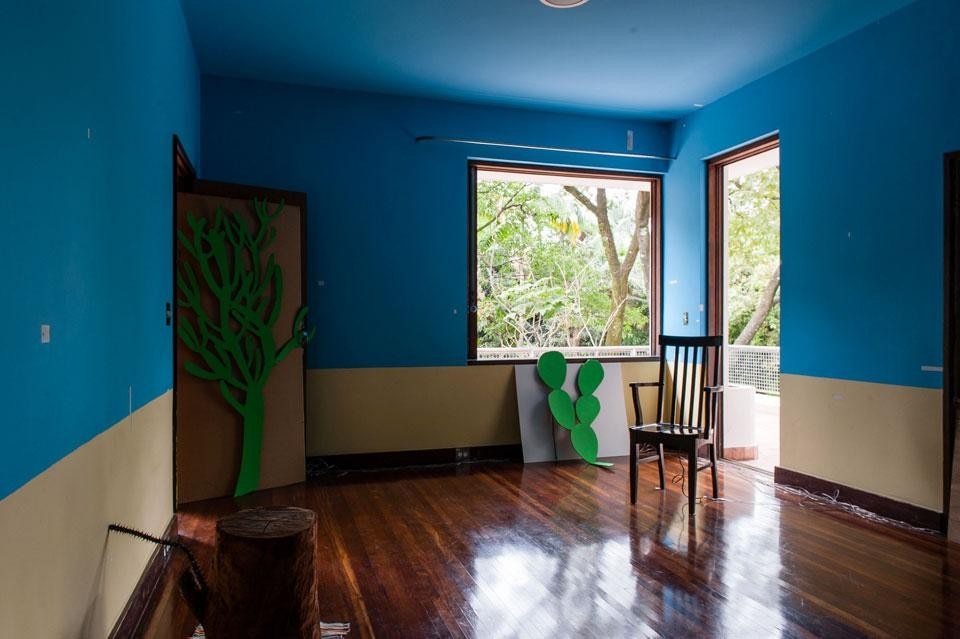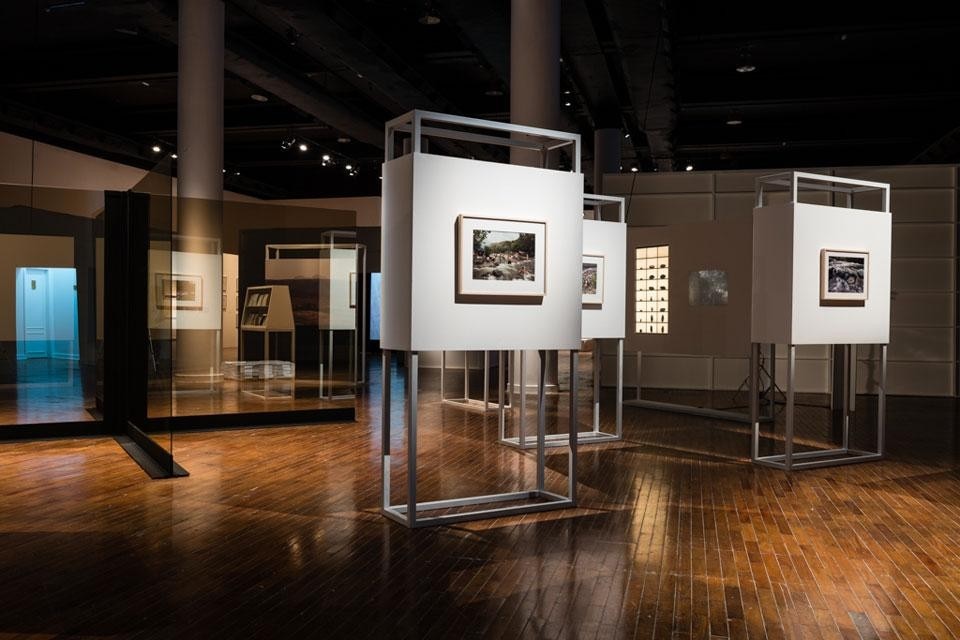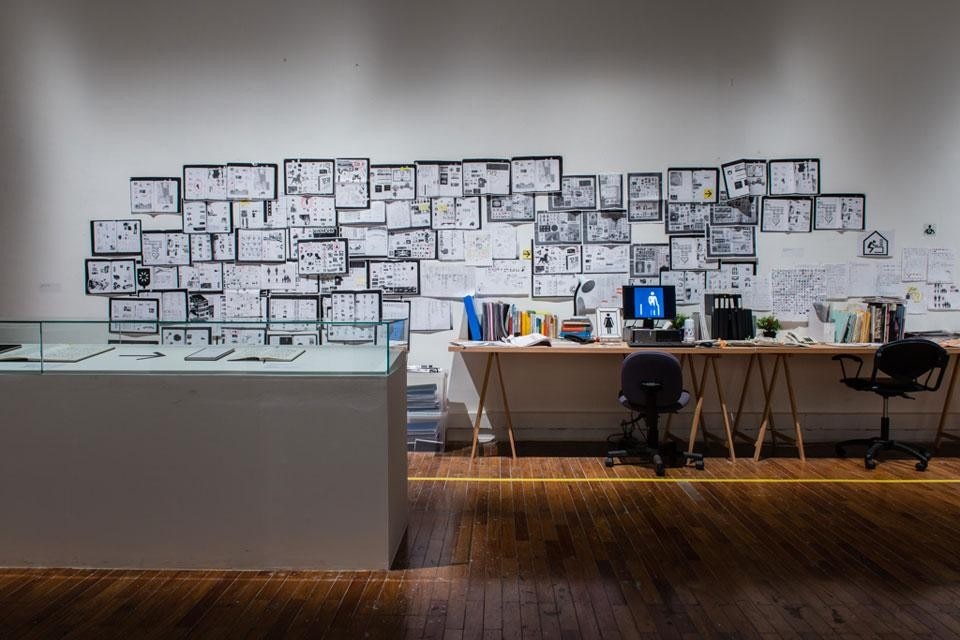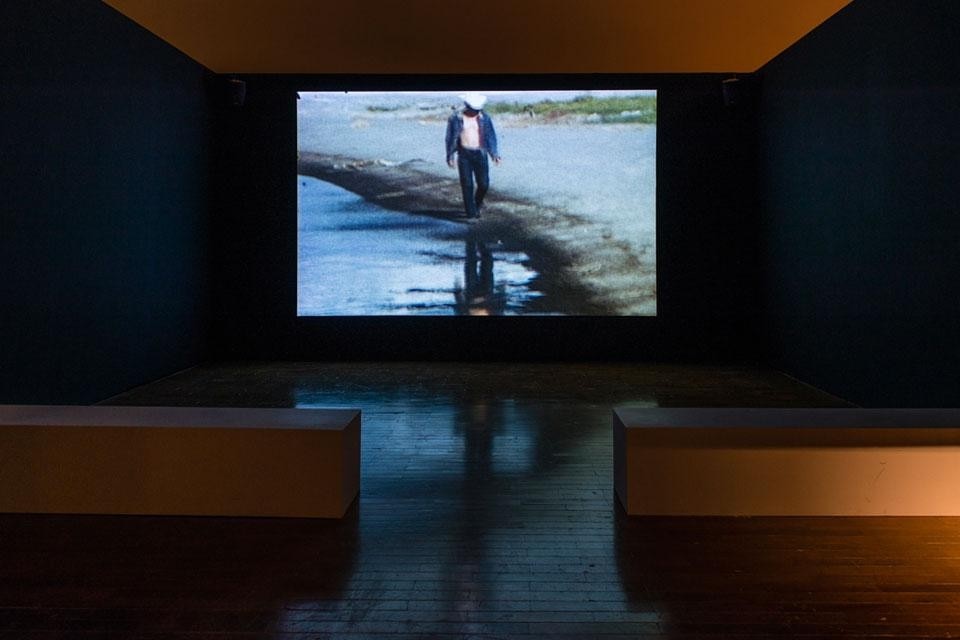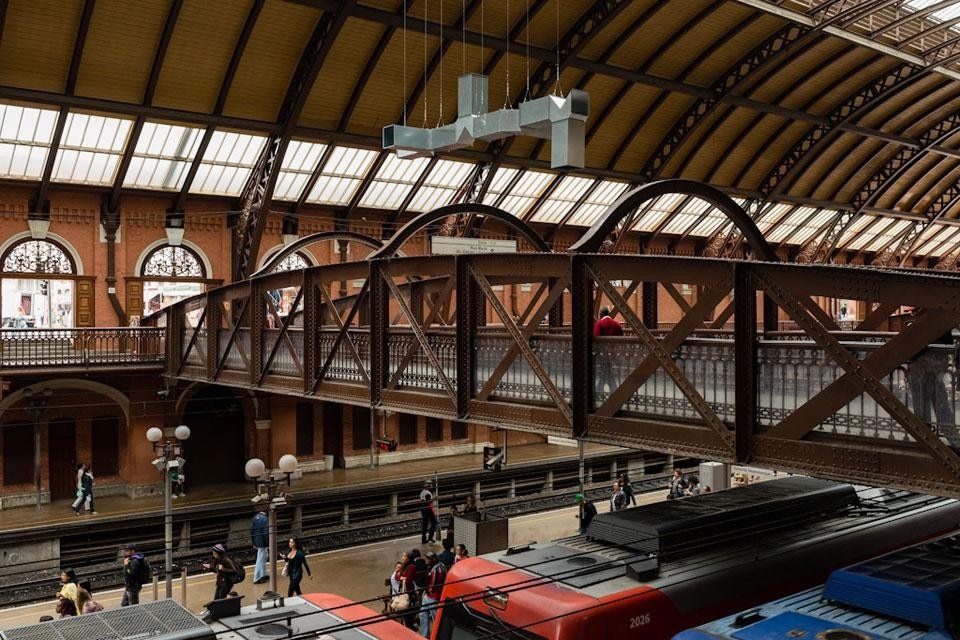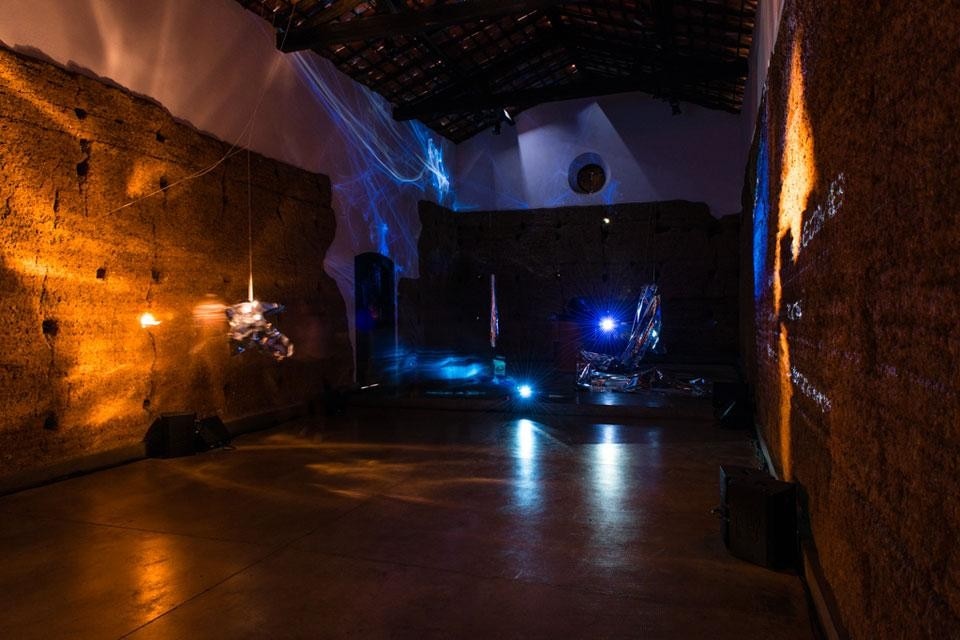The Biennial has been invited to crisscross São Paulo for three-and-a-half months, successfully challenging its reputation as a chaotic and congested city, in which the strategy of using diverse venues, which works for the Venice Bienniale and Documenta (Kassel), would theoretically be senseless.
This network, the aim of which is not so much to spread the Biennial through the metropolis as to reintroduce the metropolis into the Biennial, comprises eight venues, reclaiming the city as a space for democratising access to art. There are suggested itineraries such as the piece Todo en su mente. Viaje en dos actos ["All in the mind. Journey in two acts"] by Argentinean artist Leandro Tartaglia, a round trip with an audio guide starting from the Biennial Pavilion in Ibirapuera Park and leading to the Morumbi chapel. The particular acoustic qualities of this chapel led to it being chosen to host a selection of recordings and visual material by the visionary composer Maryanne Amacher (1938–2009), a contemporary of John Cage. This posthumous installation works not only with the sounds produced by instruments but also with the tones created by the listener's mind upon hearing them.
Square Tubes (1967), by another deceased artist, Germany's Charlotte Posenenske, hovers over the central walkway of the Luz station. This choice of location is fitting for a piece by Posenenske, who preferred to install her sculptures in airports, stations or on roundabouts rather than in galleries. An extremely light structure of folded steel sheet stems from a modular idea, which ultimately enabled her widower to produce this specific project. Every day, some 400,000 spectators have the opportunity to enjoy this work, which will go unnoticed or unappreciated by some, as it would if it were in a museum.
![Top: Charlotte Posenenske, <em>Square Tubes</em>, installation view at Luz station. Above: Leandro Tartaglia, <em>Todo en su mente. Viaje en dos actos</em> [“All in the mind. Journey in two acts”], a round trip with an audio guide starting from the Biennial Pavilion in Ibirapuera Park and leading to the Morumbi chapel Top: Charlotte Posenenske, <em>Square Tubes</em>, installation view at Luz station. Above: Leandro Tartaglia, <em>Todo en su mente. Viaje en dos actos</em> [“All in the mind. Journey in two acts”], a round trip with an audio guide starting from the Biennial Pavilion in Ibirapuera Park and leading to the Morumbi chapel](/content/dam/domusweb/en/art/2012/11/22/s-o-paulo-biennial-constellation/big_400823_8495_02_leo_121012_tudo-em-sua-mente_1501.jpg.foto.rmedium.jpg)
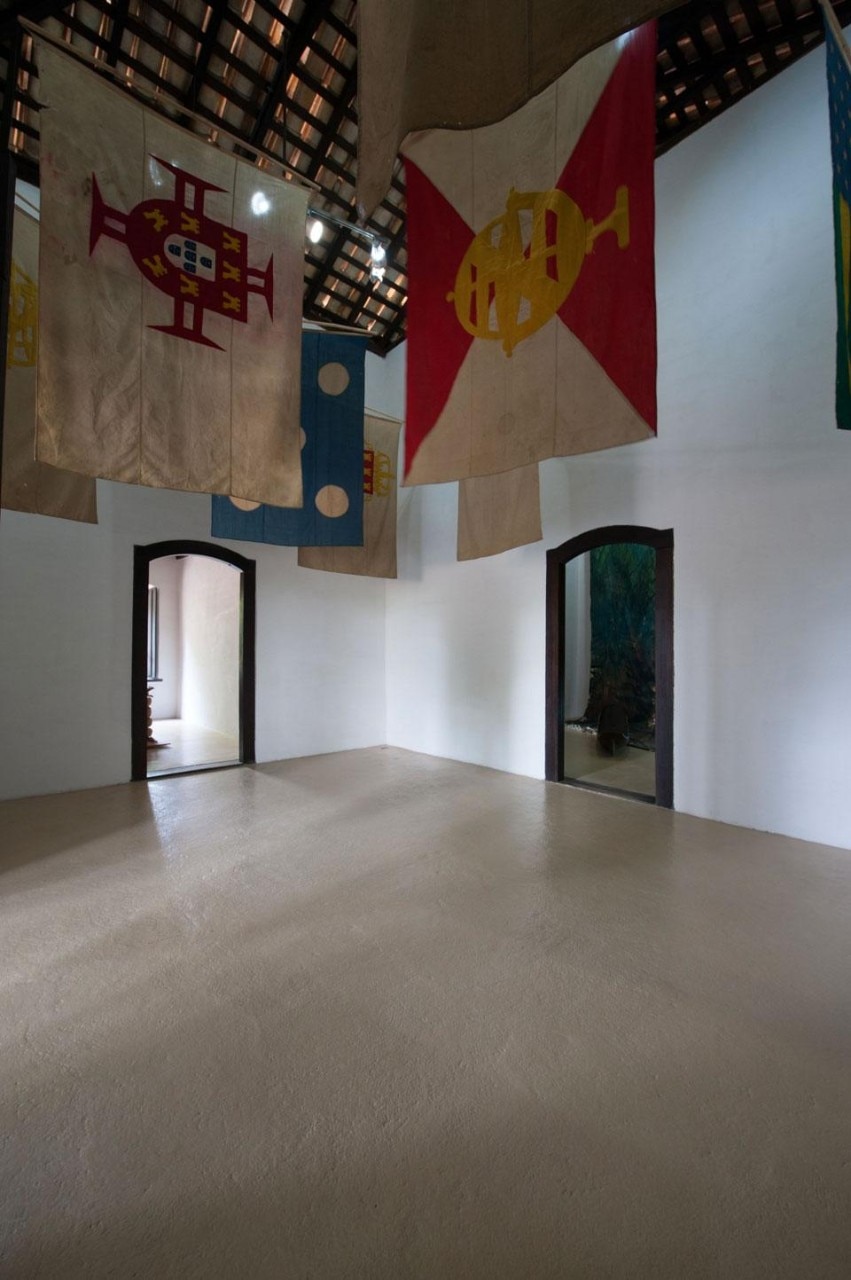
The Casa do Bandeirante, an example of rural São Paulo architecture in rammed earth, is the venue for the project Passáros do Paraíso, by Portuguese artist Hugo Canoilas. Throughout the rooms, Canoilas juxtaposes old commonplace objects with new paintings and videos produced during his research into the incursions by the bandeirantes, who began to penetrate the territory of Brazil from the 16th century onwards.
The urban journey one must take in order to view these works is at once didactic and recreational, critical and stimulating
